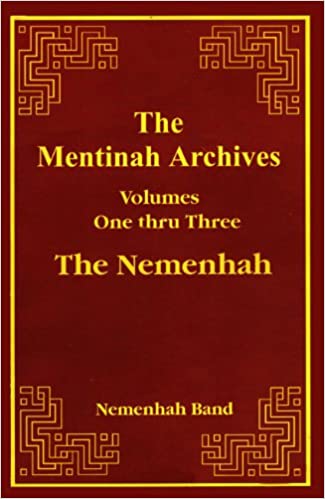
by John P. Pratt
7 Jun 2020, 13 Skull (SR), 1 Fulness (S), 1 Consecrated (P)
©2020 by John P. Pratt. All rights Reserved.
|
1. History of Archives 2. Book of Mormon Account 3. Book of Hagoth Account 4. Evidence of Authenticity 4.1 Confluence Controversy 4.2 Detailed Consistency 5. Conclusion Notes |
The Book of Mormon claims that many of the indigenous natives of North America are descendants of people who came from Jerusalem about 600 BC. That book describes their civilization, including enough geographic clues to indicate that most of the history probably took place in Mesoamerica.[1]
 |
My articles support the Mesoamerican model for Book of Mormon geography because that is the only place where there is a mountain range found extending from the Pacific to the Atlantic Oceans which can be traversed in a few days (Alma 22:27). The record states that a man named Hagoth built a large ship which was used to transport many families to the Land Northward about 56 BC (Alma 63:4), which was followed by several other ships. That would have given them plenty of time to have spread over much of North America, with archaeological remains found back to about 100 BC.
There have been Native American traditions that several of their sacred books have been hidden, with the prophecy that they would come forth after the year 2000,[2] at which time they would be accepted as holy rather than burned as having come from the devil as assumed by the Spanish priests who burned the Aztec codices.
It appears that the prophesied time has come because one of these prophesied libraries has been translated into English, called the Mentinah Archives. It is only a small part of the sacred books of the Native Americans known as the Nemenhah ("The People"). The first book in the first volume is called the "Book of Hagoth", claiming to have been written by the man named Hagoth of the Book of Mormon. It tells the history of his people up to his death.
One version of the book dates to 2005, but it has been unknown to me until last week. Although newer editions are now available,[3] I obtained an older copy, so it should be understood that the brief excerpts presented in this article may not represent the latest translation. I have not met those who translated it, have not verified where it came from, nor done any of the typical academic methods of attempting to verifying its authenticity. To me it has such obvious resonance with the Book of Mormon account that this article began to be written on the day after first reading the Book of Hagoth, in order to share the information immediately for others to evaluate for themselves.
This article summarizes the Book of Hagoth, the very first very short book of the archives, concluding that it appears to be authentic. Disclaimer: This article is solely about the Book of Hagoth, which spans only a few pages (43 verses) of a large collection of books in the archives. Each book must be evaluated on its own merits, much like the Council of Nicea evaluated each book which they chose to include in the Bible. I cannot endorse all of the books included in this archive collection because I have not even read them.
This article attempts to show that this book has a surprisingly high degree of consistency with the Book of Mormon, with known facts, and with tribal traditions. Moreover, the parts of the account of Hagoth where it fills in gaps are totally believable and have no hint of wild fabrications so common in apocryphal books. The purpose of the article is to make a convincing case to at least read the book and give it a fair hearing before attempting to decide whether you believe it or not.[4]
 |
This description of the usual manner of presentation of scientific results was given here as preface to the following official history of the Mentinah Archives which include the Book of Hagoth. I personally believe that the Book of Hagoth is so amazingly accurate, as discussed below, that there must be more to the story, which likely includes inspiration.
The following is an excerpt from the introduction to the Mentinah Archives (2007 edition):
The Mentinah Archives are the recorded histories of the people known anciently as the "Nemenhah." These people trace their history from the journey of Hagoth into the Land Northward up to the present day. They were written upon plates of various metals and alloys of metals, processed animal hides and paper velum. The records were archived in several locations in North and Central America anciently, but the only surviving copies of the histories of the Nemenhah, of which we have anything to do, have been strictly guarded in the libraries of Sanpete County, Utah.
When the Mormons came into the Sanpete valley they were met by American Natives who had been forewarned in dreams and visions of their coming and of their complete conquest of the region. After converting to the new religion, several of the Chiefs of these Americans met with Brigham Young to give into his keeping a copy of the libraries hidden in the hills of the Wasatch Front, as part of their consecration to the United Order. They were pleased that the men of prophecy had come because this meant that they could leave the valley and return to where their families had originally come. Pres. Young informed them, however, that they would have to remain but for a little while longer. His words to them; "for we have not wherewith to translate these records," are still repeated today by certain of their descendants. Shortly thereafter, the natives sealed the libraries up and no one was allowed to visit them except their brethren who came periodically from the south.
For generations, the Council of Mayan Elders has sent emissaries to the libraries to make copies for translation purposes. In 1957, the Council requested that the Church of Jesus Christ of Latter-day Saints translate and publish the books of the library. They report that the Brethren of the Church with whom they met responded just as Pres. Young had to the Chiefs of the Indians in Sanpete County -- "We have no way of translating these things. No one speaks this language anymore."
Thus, it appears that since the time of Brigham Young, Native Americans in Sanpete County have been hoping that an actual seer who can translate languages (Mosiah 8:12-13) would become the president of the LDS Church, but have been disappointed. Instead, a council which includes Mayans has come forth and these precious documents have been translated into English.
That introduction in the book is followed by a foreword which basically states that if you do not believe you can be inspired by the Holy Ghost to know the truthfulness of this book, then "this history is definitely not for you". Because I believe in obtaining both a spiritual and intellectual witness, this article attempts to supply some intellectual evidence by noting that the book contains many true details. Let us begin by reviewing what the Book of Mormon states about Hagoth.
What does the Book of Mormon say about Hagoth? It actually tells quite a bit about this man and the trip he made. Let's review that.
The end of the Book of Alma marks the end of an era in many ways. Helaman, son of Alma died in the 35th year of the judges, giving the sacred things to his brother Shiblon (Alma 62:52-63:1). Then Captain Moroni died in the next year (Alma 63:3).
 |
Moreover, some more details are given, as if we should care about them. The group going by ship launched into the West Sea (Pacific Ocean) by the narrow neck of land in order to travel to the Land Northward (Alma 63:5). Why was that detail included? Would that be important to know someday?
Then we are told that in the next year Hagoth built more ships (implying that he did not go on the first voyage) and then some of the group returned. Those took many more people and "much provisions" (Alma 63:7). Why did they need so many provisions? If they had found a lush land like the southern United States, why did they need so many provisions? And why did Hagoth begin building more ships before the first ship even returned? Was it only because many were leaving by land and decided they would rather go by ship?
Then they were never heard of since and were supposed to have drowned (Alma 63:7), for otherwise would they have not return to trade with their friends back home? We are not told whether or not Hagoth went with the second (and last) group to leave, although is usually assumed that he led both expeditions, as in the illustration. Because 5,400 families in total left, it can be deduced that most would not have gone by ship, but overland.
Then in the 39th year Shiblon conferred the sacred things to his brother Helaman's son Helaman before he died. That indeed ended an era and ended the Book of Alma. The chief judge Pahoran had died and in the 40th year the Gadianton robbers began to steadily take over (Helaman 1:2).
Thus we see that a multitude of families went north just two years before the government began to collapse as the Nephites became very wicked. Was that just lucky timing for them to get out just before the collapse? Might they have foreseen the coming calamity? Might they have been more righteous than most of the Nephites and wanted to preserve their lives, liberty and religion from destruction?
Mormon may have been inspired to include all of these details, because the Book of Hagoth answers all of these questions and fills in many more details. Let us now review parts of that book, so that the reader may decide whether the Book of Hagoth is simply the product of a vivid imagination of someone perpetrating fraud or whether those answers are indeed a true account of actual history.
This section presents my summary of the Book of Hagoth, including brief quotations from the 2007 edition discussed above. It is presented as written, as if true. No attempt is made to evaluate the veracity of statements, but only to compare them to the Book of Mormon where appropriate, especially in answer the questions posed in the last section.
The book is written by Hagoth near the end of his life as a summary of his experiences and those of the people he led. His father Hagmeni built walls and battlements for Capt. Moroni. Thus, Hagoth was taught in the building craft and became a ship builder.
In the year of Moroni's death, many Nephites recognized that pride was becoming a serious problem among them, in that it would lead to the downfall of their nation. For that reason they desired to go to the Land Northward before that coming collapse. Others saw that the Lamanites did not desist even though their land was wasted, with nothing left to plunder. Thus, they desired to move away from the threat.
Note: here we see the answer to above question about why so many wanted to leave and move north. Moreover, the timing of the exodus is tied to Capt. Moroni's death, agreeing with the Book of Mormon account.
Hagoth built a very large ship and many families left on it, although most went overland. Hagoth did not go on the ship, but reports that they set sail into the West Sea and followed the shore northward.
Pop quiz for the reader: picture a map of Mexico in your mind. Leaving from southern Mexico and sailing north following the western coast line, where would you end up?
Think about it! . . . Time's up. What do you think? Los Angeles? Seattle? Alaska?
Wrong!! You'd end up at the mouth of the Colorado River! Did you forget about the long peninsula of Baja California?
Hagoth says that as they followed the shore, they could see a distant shore west of them (Baja California). Then they came to a large muddy river, whose water could not be drunk. It was the Colorado River (Spanish for "Red"), which they named Akish (meaning "Red Earth"). The land was barren so they sent a few men back with the ship to get provisions (Hagoth 1:5).
Note: Here are told explicitly that Hagoth did not go on the first journey which is consistent with a careful reading of the Book of Mormon. The reason for the return voyage is also given as being the need for the "much provisions" mentioned in the Book of Mormon. Thus, we see that this account is filling many instructive details to the Book of Mormon narrative. We must decide whether this account is a fabrication or not!
Then Hagoth consults with Shiblon to get the word of the Lord concerning them. Here we are explicitly told that many had gone by land, which we had to deduce from the Book of Mormon from the exceedingly large number who had left. The Lord tells Shiblon to send ships with provision by both the West and the East Sea, along with sets of scriptures (Hagoth 1:6).
Note: Here we learn that the reason that Hagoth began building more ships is that it was commanded by the Lord! This account provides a detail we can check about timing because it states the Shiblon was still alive when the new ships were built. The Book of Mormon states that the ships were built in the 38th year (Alma 63:7) and that Shiblon died in the 39th year (Alma 63:10), so that detail is consistent between the two accounts.
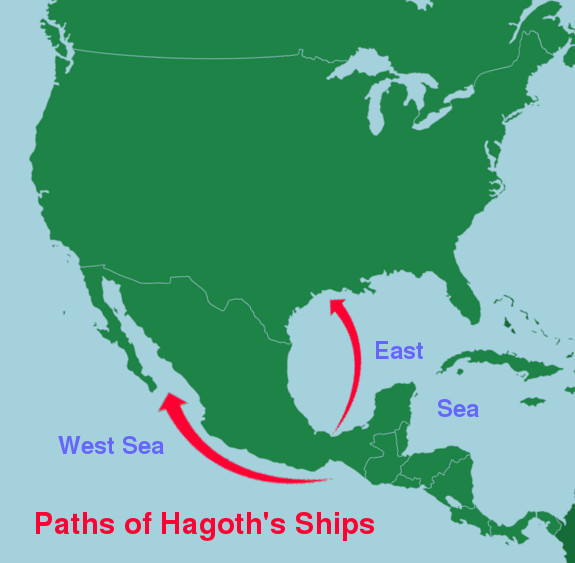 |
Hagoth reports that those who had gone north via the West Sea "found a land barren and unforgiving"! When they ran low on provision they stayed at the mouth of a great river, they sent the ship back for provisions. So why did Hagoth send many more ships to a barren land? He reasoned that such a great river must come from a fertile land. This time Hagoth went with them, along with some of the People of Ammon (Hagoth 1:7).
Hagoth states that when he arrived at the big river he found it so muddy as to be undrinkable. Most of his group stayed there at the mouth of the river to build a city because of the plentiful fish in the bay, but he and others continued on. He notes that he was a ship builder and wanted to go where there were plenty of trees, which surely must have existed upriver. He and the families of twelve Nephites and twelve Ammonites continued on in smaller boats.
They came to a huge canyon with precipices and walls so high that no one could climb them (Grand Canyon) and that in some places the river was very narrow. They were totally unprepared for such a long journey through a barren land. When they were near death a miracle happened, that a very large fish was caught which fed them all well because they always shared all things in common. They praised the Lord for saving them.
After they left the great canyon they came to more fertile land with the river wide with grass on both sides and trees in the mountains. At this place their course on the river turned from going east to going north. They had traveled upriver for 93 days and it was the 38th year of the judges, which agrees with the Book of Mormon account. There they built their settlement at the bend in the river. They went on to build many cities and set up the Church with authority of emissaries sent from Shiblon, and later Helaman (Hagoth 1:20-23). Note that such implies that by that time a few years later, Shiblon had died and been replaced by Helaman (son of Helaman) as stated in the Book of Mormon.
They set up a government where the women chose the judges because they had learned the lesson that men tend to get puffed up with pride, whereas women are more humble. This led to them living in peace.
Later when they learned of the destructive wars south of them between the Nephites and Lamanites, they decided to attempt to remove all racism between themselves (being both Nephites and Lamanites), by calling themselves "The People". What a great explanation of why so many different tribes of Native Americans still refer to themselves as "The People"!
Hagoth reports that they strove diligently to root out even the beginning signs of the Gadianton Robbers developing among them, for they were destroying the entire nation of the Nephites to the south. This was accomplished by teaching the gospel. He noted that pride and the desire for worldly gain were the traits that led men to join the Gadianton's.
Hagoth's city became a very large, righteous, and happy people in the Land Northward, whereas the Nephites because a wicked and loathsome people in the Land Southward. On the other hand, the Lamanites in the south became more righteous (Hagoth 1:29).
Then we learn something new about Nephi, the son of Helaman. He went to Hagoth's city and conferred upon several the priesthood after the order of the Son of God. Hagoth includes Nephi's ordination prayer of his two sons, Hagmeni (Hagoth 1:31) and Ameliki (Hagoth 1:32). In Hagmeni's blessing, we learn that they traced this priesthood back to Alma who received it from God.
One notable feature of these two priesthood confirmations is that neither confuses priesthood with a church office. They are two totally different concepts, which are often conflated. The priesthood exists outside of any church. It is a fellowship directly with angels, the Lord, or with the Father. The priesthood was required so that Joseph and Oliver could found the Church.
In the blessings, Hagoth's two sons had the Priesthood after the order of the Son of God conferred upon them. There is no mention whatsoever of being a high priest. Yet this is the priesthood required to be high priest in the Church of Christ. The Book of Hagoth understands this principle, because it is explicitly stated that after Hagmeni received that priesthood, Nephi then ordained (set apart) him to be a high priest (in the Church) (Hagoth 1:35). Thus, those are two separate procedures. That is a detail that few LDS leaders know, even priesthood leaders. It is highly unlikely that perpetrators of a fraud would consider that detail, or even be brash enough to include these ordination prayers, both given by the prophet Nephi.
Moreover, it is stated that when Nephi spoke, it was as if with the voice of God (Hagoth 1:33). How many forgers would be aware that there is precedent for ordinations directly performed by God (DC& 84:12), and in fact, the voice of God must be present for ordinations to the Holy Priesthood after the Order of the Son (Genesis 14:28-29, Inspired Version, D&C 1:38).
All these obscure details witness that this book is actually true.
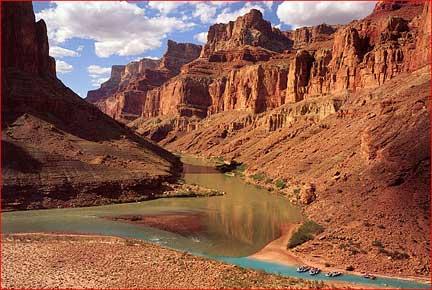 |
One evidence favoring the authenticity of the Book of Hagoth is that it places the settlement of Hagoth's city at the place where several tribes claim their origin was. The Hopi and Zuni tribes (both are divisions of the Pueblo) claim that they came from the area of the confluence of the Little Colorado into the Colorado River. That does not prove anything in itself, except that if the book is a fraud, then it was written by someone familiar with the traditions of several tribes about their location of origin.
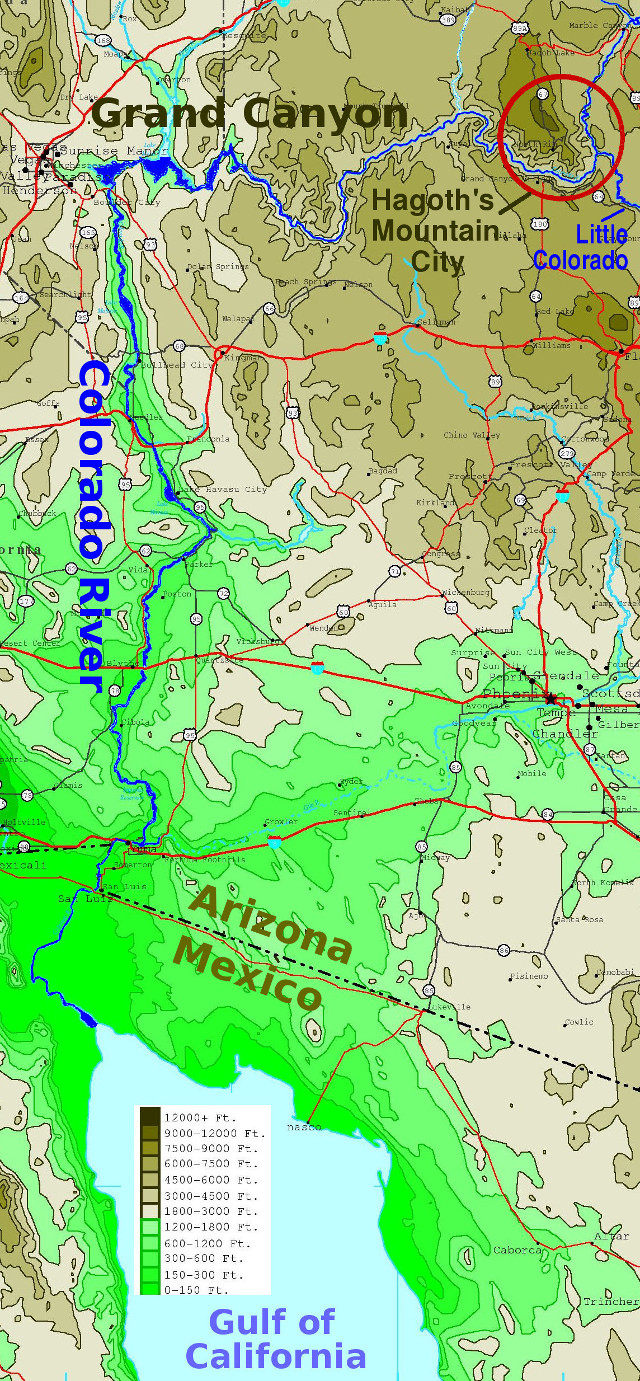 |
Moreover, the book explicitly states that Hagoth, being a ship builder and carpenter, was looking for a wooded area to build his city, so he could trade with those came the previous year who were building a city at the mouth of the Colorado. If this book is a fraud, those perpetrators were careful to note that the encircled area on the map contains much of the Kaibab National Forest (in high mountains -- altitude is indicated by the color) one would encounter going up the Colorado. Those who have been to the Grand Canyon via Jacob's Lake will be familiar with the lush forests there. He may have located his city at lower altitude, but access to the forests was close. It is proposed the it was located somewhere within the red circle. It is much easier to believe that the extremely self-consistent narrative in the Book of Hagoth is actually authentic than a fraud!
There has been a land development controversy about the land near the confluence owned by the Navajo Nation in the Black Mesa region of Arizona. The dispute is not reviewed because is beyond the scope of this article and is well documented on the Internet,[8] but apparently the Navajo Nation won.[9] The relevance to this article is that it brought attention to the fact that several Native American tribes trace their origin to that very area, which corresponds to that described in the Book of Hagoth. Those tribes include the Hopi (formerly called Pueblo, Spanish meaning they lived in adobe houses) and the Zuni Pueblo. They are considered by some to be oldest culture in the U.S.[10] Note that the Book of Mormon states that many who went north build their houses from cement due to lack of lumber (Hel. 3:7).
That rather precise agreement between modern tribal traditions of their location of origin and that in Book of Hagoth seems far beyond chance. Thus, it is most likely either due to the Book of Hagoth being authentic or of being a fraud by someone familiar with tribal beliefs.
There is now another controversial project about building a dam on the Little Colorado on Hopi land, which is also held sacred by them.[11]
Let us now consider the following points which convince me that the book is authentic.
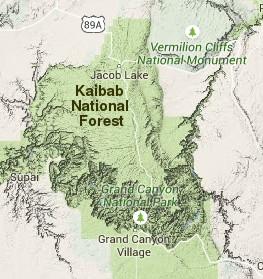 |
To me this list provides independent support for the spiritual witness received that this book is true. Without that knowledge, however, these arguments alone may not be compelling. It is hoped that the reader will at least read the Book of Hagoth before deciding.
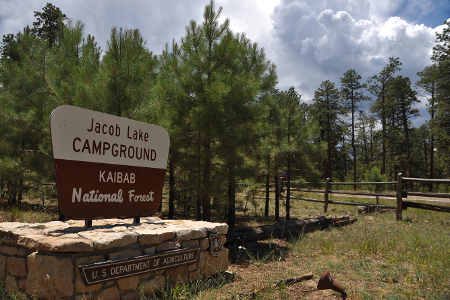 |
This conclusion is not based on having examined any physical record from which it was translated, nor on the credentials of the translators. It is based solely on comparing its content to the history of Hagoth in the Book of Mormon, and finding both consistency with tribal traditions of the location given where Hagoth builds his city, as well as many correct details included which would likely be unknown to anyone attempting to commit fraud. The foreword to the volume cautions that one must read by the Spirit in order to accept the volume as true, and that definitely appears to be the case.
Thus, the main goal of this article is to convince readers to at least read the Book of Hagoth. That is difficult because the version with easily recognizable English names is long out of print. It is surprising that this author is still awaiting authorization to provide a downloadable copy with this article, because pirated copies of the archives are easily found on the Internet.
This is a list of verses of the Book of Hagoth quoted in this article. The first number is the chapter number (not stated, hence implied to be 1) and the second is to the verse number in that chapter.